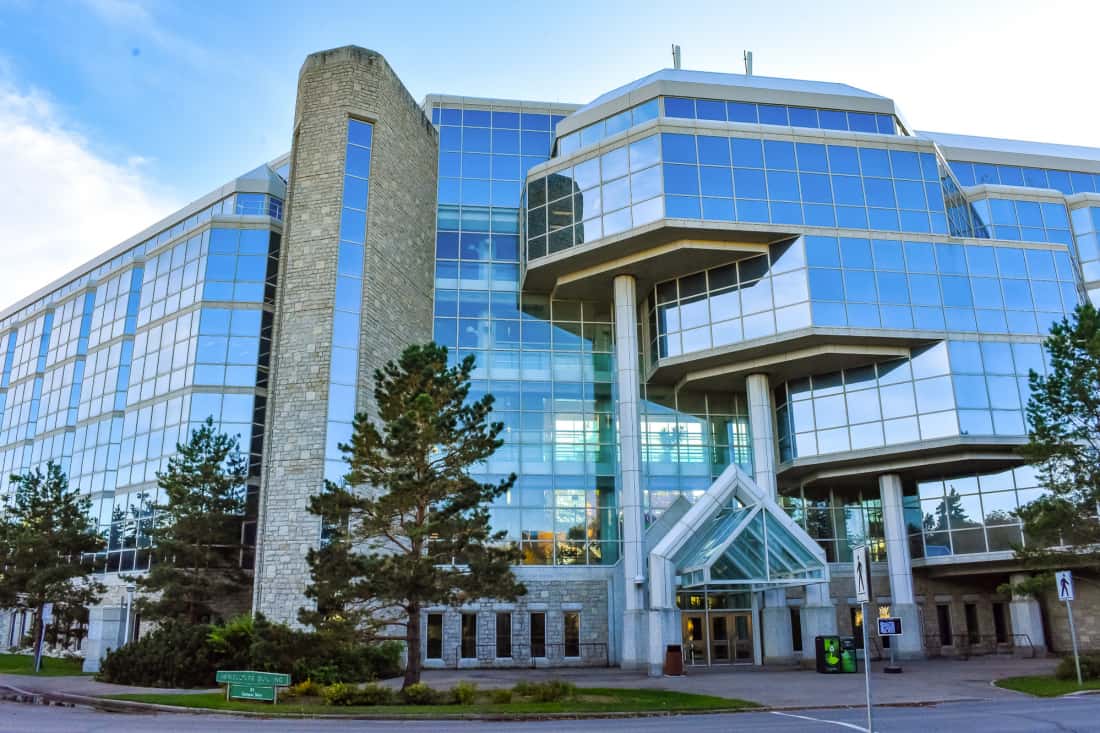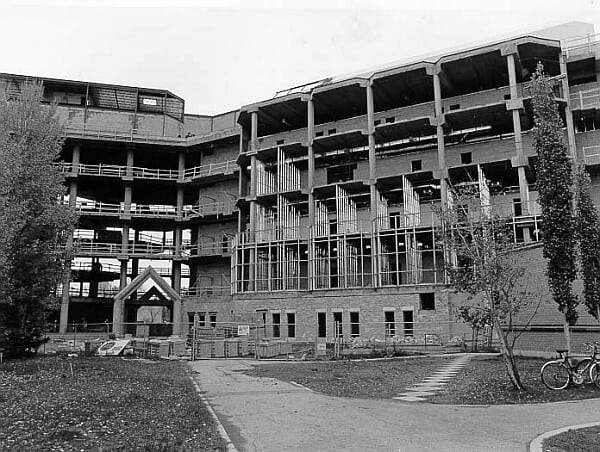
Although the Agriculture Building’s gorgeous, windowed exterior distinguishes the infrastructure on the University of Saskatchewan campus, its large interior filled with plants, artwork and donor commemoration is what really tells its unique history.
One of the first things that people notice when walking into the Agriculture Building’s spacious atrium is a small statue depicting two pioneers plowing prairie sod held within a glass case. The piece is dedicated to Leo F. Kristjanson, president of the university in the 80s, who played an integral role in facilitating the infrastructure’s reconstruction.
When the province established the U of S, its first colleges were agriculture and arts and science, both instituted in 1909. While the Arts Building — opened in 1959 — centralized one of the colleges, Kristjanson and many others believed the College of Agriculture was scattered among too many places and needed a similarly identifiable base.

With a goal of prominently establishing agriculture in Saskatchewan, Kristjanson began the Sodbusters Club in 1984 to raise the $100,000 needed from community donors to cover an engineering building.
The donated money allowed Kristjanson to contact Obert Friggstad, the soon-to-be architect of the building estimated to cost $92 million. Premier Grant Devine was willing to support its construction by pledging $80 million, conditional upon the remaining funds being raised by the U of S.
To raise the $12 million outside the provincial budget, Kristjanson would have to rely on more community support and grassroots funding. The Partners in Growth campaign trained alumni and students to find potential donors by telephone canvassing. The time-sensitive campaign also involved both the president and the campaign co-chair E.K. Turner soliciting funds by contacting potential corporate donors.
Because of how reliant the project was on donations, supporters would be saluted by permanent recognition in the future atrium and Beamish Conservatory. Corporate donors have their names engraved on stone plaques around the palm tree. The Partners in Growth recognition plaque is on the wall opposite to the atrium elevators on the ground floor.
With funds having been raised and a parking lot selected as the college’s new home, the official start of construction began in November 1988 with a Sod Turning ceremony. The celebratory event had Premier Devine plough a piece of grass with the green plough still displayed in the building’s E Wing.
On July 11, 1990, it was announced that the fund had succeeded in raising $12,893,000, and solicitation ceased once the campaign total reached $13.5 million.
The Agriculture Building officially opened on Oct. 25, 1991. Ironically, the celebration was held in the College of Education’s gymnasium because the atrium could not accommodate the 4,000 people who were invited.
The collective project which materialized Kristjanson’s vision of having a centralized college was made possible by the support of Saskatchewan’s community. Friggstad’s windowed design welcomes prairie sunshine and marked a significant departure from the university’s previously gothic architecture.
The building is also visually distinct for its interior design featuring space for art including the Kenderdine Art Gallery, hanging silk-screen prints and the bronze sculpture titled Garden of the Mind.

The building was originally only five floors but was planned to accommodate a possible sixth-floor addition, which officially opened in 2001. Another feature added later was a rooftop garden established in 2016, transforming the unused space into a bountiful garden displaying sustainable agricultural practices.
Aside from being an architecturally unique structure on campus, the Agriculture Building also functions as mini-museum by telling its own history through relics and remembering the people who made dreams a reality.
—
Noah Callaghan/ Staff Writer
Photos: Nicole Neriuoka, Supplied by U of S Archives